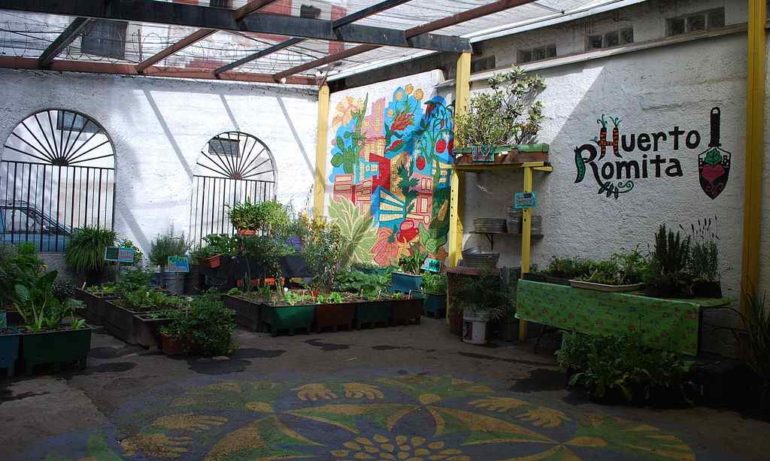Mexico City gets a bad rap as one of the world’s largest and most polluted cities—but there’s more to the story than smog and soot. A thriving urban agriculture movement has developed among residents seeking a healthier and more sustainable lifestyle. Here are 10 of the most creative and innovative projects transforming the local food system in Mexico City.
1. Centro de Agricultura Urbana Romita is an educational demonstration garden. The rooftop site exhibits a variety of urban agriculture techniques (including hydroponics and vertical growing) and provides workshops, resources, and training for city residents. Founder Lily Foster says of the initiative, “What we do is work to develop grow models that are practical, so that people who have an eight-hour workday can still have an opportunity to grow a percentage of their food at home.”
2. Nonprofit Cultiva Ciudad is expanding urban agriculture in Mexico City. Among many projects, Cultiva Ciudad manages a school garden program that engages and educates students at several schools in the city.
3. With Cultiva Ciudad, Centro de Autismo Teletón, a center for autistic children, hosts a therapeutic sensory garden. Its education program, pollinator garden, herb spiral, and sensory tunnel give special-needs children the opportunity to connect with nature.
4. Another of Cultiva Ciudad’s many projects is an urban agriculture education program at a youth reform center. Through this project, Cultiva Ciudad helps troubled young people find work and reintegrate into society by teaching valuable urban gardening skills.
5. The Cultiva Ciudad-helmed Huerto Tlatelolco urban garden includes an edible forest with 45 tree varieties, a seed bank, and a large section of bio-intensive gardening. As noted on their website, “the main objective of the project is to involve the local community through urban agriculture related activities. [Members of Huerto Tlatelolco] conduct a program of social bonding through workshops, school visits, volunteer programs, and community events.”
6. In the borough of Milpa Alta, on the outskirts of the capital city, around 20 percent of the working population engages in terracing or other forms of agriculture. Nopal cactus—enjoyed fresh or used in salads, hot dishes, and beverages—is one of the primary crops of Milpa Alta. In fact, almost 100 percent of nopal consumed in Mexico City comes from this region. Home gardens and livestock husbandry are also popular.
7. The Miravalle Community Assembly runs a community improvement project that includes the Miravalle Environmental Education Center. Focused on youth engagement through urban agriculture, the Center is home to vegetable gardens, chicken coops, a trout farm, and a compost program.
8. At the National Cancer Institute’s Support Center for Integrated Care, Cultiva Ciudad operates a therapeutic garden for patients. Participants learn the basics of gardening and cooking, with an emphasis on vegetables and herbs that have anti-cancer properties.
9. Mexico City residents often grow food using rooftop gardens; to promote this compact agriculture, the municipal government has issued grants to over 3000 city residents since 2007—resulting in a boom in rooftop cultivation.
10. Sembradores Urbanos is a nonprofit transforming Mexico City’s urban environments with fertile soil and healthy food. The organization founded the Centro de Agricultura Urbana Romita (see above) to engage residents in the local food economy.
Mexico City’s urban residents are growing healthy food while making their city more sustainable. More than that, they’re using urban agriculture in creative ways, like education and therapy, to create jobs and to build community. Mexico City’s urban agriculture movement has truly blossomed.






